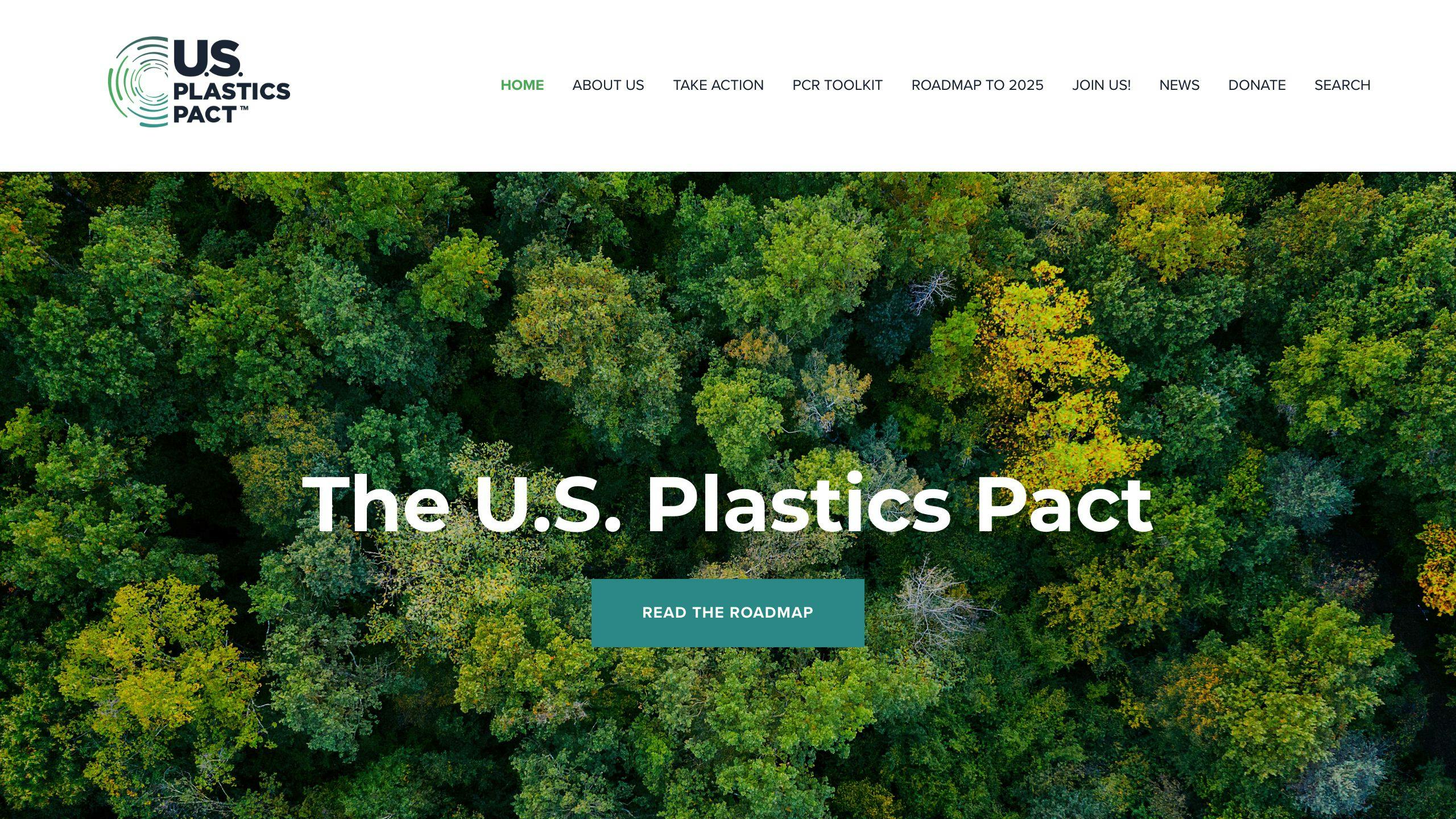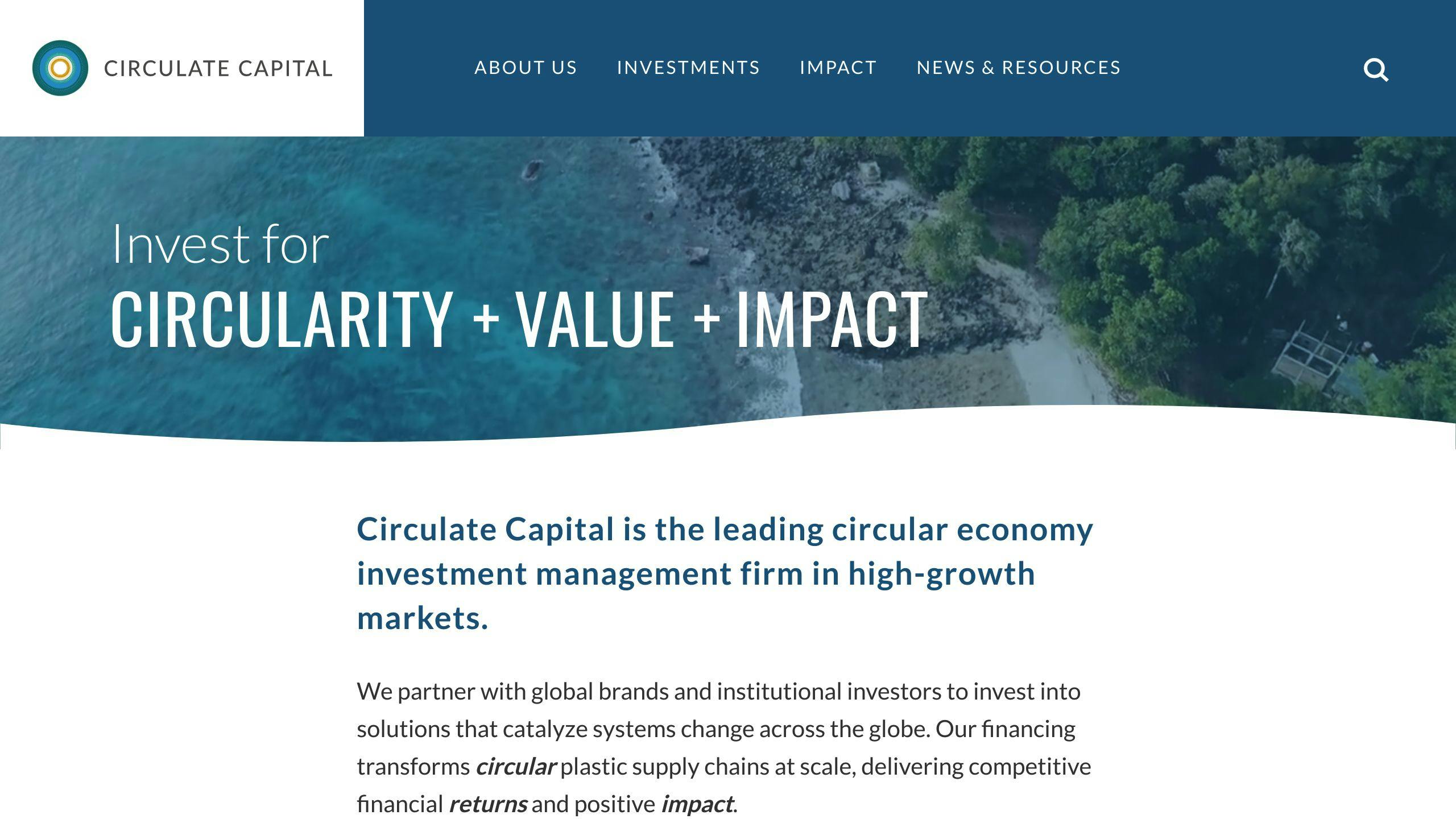Microplastic pollution is a global issue that requires collaborative efforts to address. This article highlights 10 partnerships between governments and private companies working together to reduce microplastic pollution through innovative solutions, investments, and policies.
Key Partnerships:
-
Global Partnership on Plastic Pollution and Marine Litter (GPML) - A collaborative effort led by the UN to reduce plastic leakage into the ocean and promote circular production cycles.
-
U.S. Plastics Pact - Aims to eliminate problematic packaging, ensure recyclability, and increase recycled content in plastic packaging by 2025.
-
End Plastic Pollution International Collaborative (EPPIC) - A $14.5 million partnership hosted by IUCN to make the plastic lifecycle more sustainable.
-
Global Plastic Action Partnership (GPAP) - Enables countries to create customized plans and impact communities to tackle plastic waste.
-
Indonesia's Zero-Plastic Waste Ambitions - A public-private partnership between the Indonesian government, Malang Regency, and the Alliance to End Plastic Waste to improve waste management.
-
Circulate Capital, USAID, and Ocean Conservancy - Provides technical expertise and financing to companies developing innovative models for reducing ocean plastic pollution.
-
Global Partners For Plastics Circularity - Invests in recycling systems, creates new business approaches, and redesigns packaging to enable circularity.
-
IUCN-led EPPIC - Focuses on making the entire plastic lifecycle more sustainable by changing the design and use of plastic products.
-
GPAP's Impact - Develops locally driven impact communities and national action roadmaps to drive local change in tackling plastic pollution.
-
Indonesia's Zero-Plastic Waste Ambitions - Aims to serve 6.5 million people and provide a blueprint for financially sustainable waste management systems.
These partnerships demonstrate the power of collaboration in addressing the complex issue of microplastic pollution and promoting a circular economy framework for dealing with plastics.
1. Global Partnership on Plastic Pollution and Marine Litter (GPML)
The Global Partnership on Plastic Pollution and Marine Litter (GPML) is a collaborative effort that brings together various stakeholders to address marine litter and plastic pollution. Launched in 2012, the partnership is led by a Steering Committee and supported by the United Nations Environment Programme (UNEP).
Strategic Objectives
The GPML aims to create a global community working together to prevent marine litter and plastic pollution. Its objectives include:
- Reducing plastic leakage into the ocean through improved design
- Applying the '3R's' principle (reduce, reuse, and recycle)
- Encouraging 'closed-loop' systems and more circular production cycles
- Maximizing resource efficiency and minimizing waste generation
Partnership Model
The GPML provides a platform for cooperation, knowledge sharing, and expertise exchange among stakeholders. Any entity working to address marine litter and microplastics can join the partnership.
Scope and Scale of Impact
The GPML has a global network with 5 Regional 'Nodes' that coordinate 18 marine litter Action Plans, covering 11 regional seas. By bringing together diverse stakeholders, the GPML works towards creating solutions to this global issue.
| Regional Nodes | Number of Action Plans | Regional Seas Covered |
|---|---|---|
| 5 | 18 | 11 |
2. U.S. Plastics Pact

The U.S. Plastics Pact is a collaborative effort to create a circular economy for plastic in the United States. It brings together diverse stakeholders across the plastics value chain to rethink the way we design, use, and reuse plastics.
Strategic Objectives
The U.S. Plastics Pact has four key targets to be achieved by 2025:
| Targets | Description |
|---|---|
| 1 | Define and eliminate problematic or unnecessary packaging |
| 2 | Ensure 100% of plastic packaging is reusable, recyclable, or compostable |
| 3 | Effectively recycle or compost 50% of plastic packaging |
| 4 | Achieve an average of 30% recycled content or responsibly sourced biobased content in plastic packaging |
Partnership Model
The U.S. Plastics Pact connects businesses, not-for-profit organizations, research institutions, government agencies, and other stakeholders to work toward a common vision of a circular economy for plastics.
Scope and Scale of Impact
The U.S. Plastics Pact has grown to over 135 members, collectively responsible for generating 33% of all plastic packaging in scope within the U.S. by weight. This equates to the placement of 3.1 million metric tons of plastic packaging in the market.
3. End Plastic Pollution International Collaborative (EPPIC)
The End Plastic Pollution International Collaborative (EPPIC) is a $14.5 million USD, multiyear public-private partnership launched at the 78th session of the UN General Assembly. Its goal is to galvanize global action to beat plastic pollution. Hosted by the International Union for Conservation of Nature (IUCN), EPPIC brings together diverse stakeholders, including the Aspen Institute, The Ocean Foundation, and Searious Business, with initial seed funding from the U.S. Department of State.
Strategic Objectives
EPPIC focuses on making the full lifecycle of plastic more sustainable. It supports projects worldwide to make plastic circularity a reality.
Partnership Model
EPPIC connects governments, businesses, civil society, philanthropies, and others to create opportunities that no single entity could achieve alone. By bringing together a diverse set of stakeholders, EPPIC aims to complement actions taken by national governments and offer innovative solutions to advance plastic circularity.
Scope and Scale of Impact
As a global partnership, EPPIC has the potential to drive significant change in the fight against plastic pollution. By working together, EPPIC's partners can share knowledge, expertise, and resources to create a more sustainable future for plastics.
| Partners | Role |
|---|---|
| International Union for Conservation of Nature (IUCN) | Host |
| Aspen Institute | Stakeholder |
| The Ocean Foundation | Stakeholder |
| Searious Business | Stakeholder |
| U.S. Department of State | Initial seed funding |
4. Global Plastic Action Partnership (GPAP)
The Global Plastic Action Partnership (GPAP) is a collaborative effort between governments, businesses, and international organizations to tackle plastic pollution. GPAP enables countries to create customized plans to address plastic waste, leveraging existing activities and accelerating impact.
Strategic Objectives
GPAP focuses on developing locally owned, locally driven impact communities (Plastic Action Partnerships) to tackle plastic pollution. These partnerships bring together diverse stakeholders to create bold, evidence-based interventions to end plastic waste.
Key Achievements
GPAP has made significant progress in the fight against plastic pollution, with:
| Achievement | Description |
|---|---|
| New countries joined | 6 countries joined in 2023 |
| Roadmaps published | 9 roadmaps published to date |
Partnership Model
GPAP's growing community enables collaboration with over 900 organizations, including governments, businesses, and international organizations. This collaboration helps resources reach more people, drive impact faster, and support countries in overcoming the plastic waste challenge.
Scope and Scale of Impact
GPAP's work prioritizes advancing gender equity, inclusion, and the livelihoods of traditionally marginalized people and communities. Its expert guidance helps design partnerships and initiatives that shape a more sustainable and equitable world.
5. Indonesia's Zero-Plastic Waste Ambitions
Indonesia has set ambitious targets to reduce plastic waste, aiming for a 70% reduction in marine plastic leakage by 2025 and achieving near-zero plastic pollution by 2040. To achieve this, the country has launched the Bersih Indonesia: Eliminasi Sampah Plastik programme, a public-private partnership between the Indonesian government, the Malang Regency, and the Alliance to End Plastic Waste.
Strategic Objectives
The programme aims to serve 6.5 million people and provide a blueprint for financially sustainable waste management systems in emerging markets. It will contribute to better collection, sorting, and recycling of plastic waste in Indonesia.
Key Achievements
The Bersih Indonesia programme has already made significant progress, with the launch of phase one in Malang, which will serve more than 2.6 million people and be developed at a cost of US$29 million, fully funded by the Alliance.
Partnership Model
The programme brings together the Indonesian government, the Malang Regency, and the Alliance to End Plastic Waste, leveraging the strengths of each partner to achieve a common goal.
Scope and Scale of Impact
The Bersih Indonesia programme has the potential to create a significant impact on plastic waste reduction in Indonesia, with the potential to divert 140,000 tonnes of plastic waste every year and create around 8,000 jobs.
| Impact | Description |
|---|---|
| Plastic waste diversion | 140,000 tonnes per year |
| Job creation | 8,000 jobs |
sbb-itb-1dc3f59
6. Circulate Capital, USAID, and Ocean Conservancy

This partnership brings together Circulate Capital, USAID, and Ocean Conservancy to tackle ocean plastic pollution. They provide technical expertise and blended financing to emerging companies that are best placed to develop new, innovative models for reducing ocean plastic pollution.
Strategic Objectives
The partnership aims to support companies that can collect, aggregate, and recycle plastic waste, reducing ocean plastic pollution.
Partnership Model
This partnership combines the strengths of development agencies and private investment. USAID Clean Cities, Blue Ocean provides technical assistance, while Circulate Capital brings expertise in scaling innovation and driving growth. POPSEA partners Polindo and Bantam Materials contribute experience in plastic collection and aggregation infrastructure.
Innovation and Sustainability
This partnership is innovative in its approach to tackling ocean plastic pollution. By combining technical expertise and blended financing, it supports emerging companies that are developing new models for reducing ocean plastic pollution. This partnership demonstrates a commitment to sustainability by promoting a more circular economy.
| Partner | Role |
|---|---|
| USAID Clean Cities, Blue Ocean | Technical assistance |
| Circulate Capital | Scaling innovation and driving growth |
| POPSEA partners Polindo and Bantam Materials | Plastic collection and aggregation infrastructure |
7. Global Partners For Plastics Circularity
Global Partners For Plastics Circularity is a strategic partnership that aims to accelerate a circular economy for plastics. The partnership invests in recycling systems, creates new business approaches, and redesigns packaging to enable circularity.
Strategic Objectives
The partnership's objectives include:
- Increasing the types and amount of plastics that can be recycled
- Enabling circularity
- Designing new products made with recycled plastics
Key Achievements
Global Partners For Plastics Circularity has made significant progress in accelerating a circular economy for plastics. The partnership has:
| Achievement | Description |
|---|---|
| Invested in recycling systems | Substantially invested in multiple recycling systems and technologies |
| Created new business approaches | Developed new business approaches to enable circularity |
| Redesigned packaging | Redesigned packaging for longer use, reuse, and recyclability |
Partnership Model
The partnership model involves collaborating with various organizations across the plastics value chain to:
- Secure greater access to used plastics
- Enable circular feedstocks in the production of plastics
- Increase recycled content in plastic products
Scope and Scale of Impact
The partnership's scope and scale of impact are significant, with the potential to reduce plastic pollution and promote a sustainable, circular economy.
Innovation and Sustainability
The partnership's approach to tackling microplastic pollution is innovative and sustainable. By investing in recycling systems, creating new business approaches, and redesigning packaging, Global Partners For Plastics Circularity is promoting a more circular economy and reducing plastic waste.
8. About the End Plastic Pollution International Collaborative (EPPIC)
The End Plastic Pollution International Collaborative (EPPIC) is a public-private partnership that aims to reduce plastic pollution globally. Launched at the 78th session of the UN General Assembly, EPPIC is hosted by the International Union for Conservation of Nature (IUCN) and has partners like the Aspen Institute, The Ocean Foundation, and Searious Business. The U.S. Department of State provided initial seed funding for the partnership.
Strategic Objectives
EPPIC's main goal is to make the entire lifecycle of plastic more sustainable. To achieve this, the partnership focuses on changing the design and use of plastic products. EPPIC supports projects worldwide to make this goal a reality.
Partnership Model
EPPIC brings together governments, businesses, civil society, philanthropies, and others to create opportunities that no single entity could achieve alone. The partnership builds on existing partnerships and networks to avoid duplication of efforts and enable faster progress.
Scope and Scale of Impact
EPPIC has the potential to drive significant commitments and raise funds to deploy pilot solutions and exchange best practices for combating plastic pollution globally. By making the full lifecycle of plastic more sustainable, EPPIC can lead to a substantial reduction in plastic pollution and promote a circular economy.
| Partners | Role |
|---|---|
| International Union for Conservation of Nature (IUCN) | Host |
| Aspen Institute | Partner |
| The Ocean Foundation | Partner |
| Searious Business | Partner |
| U.S. Department of State | Initial seed funding |
9. IUCN-led End Plastic Pollution International Collaborative (EPPIC)
The IUCN-led End Plastic Pollution International Collaborative (EPPIC) aims to reduce plastic pollution globally. EPPIC focuses on making the entire lifecycle of plastic more sustainable by changing the design and use of plastic products.
Strategic Objectives
EPPIC's main goal is to support projects worldwide that make plastic more sustainable. The partnership complements global treaty negotiations and prepares countries for ambitious implementation.
Key Achievements
EPPIC has launched a $14.5 million USD, multiyear public-private partnership. This partnership brings together a diverse set of stakeholders to drive innovation and investment in circular solutions for the plastic sector.
Partnership Model
EPPIC connects governments, businesses, civil society, philanthropies, and others to create opportunities that no single entity could achieve alone. The partnership builds on existing partnerships and networks to avoid duplication of efforts and enable faster progress.
Scope and Scale of Impact
EPPIC has the potential to drive significant commitments and raise funds to deploy pilot solutions and exchange best practices for combating plastic pollution globally. By making the full lifecycle of plastic more sustainable, EPPIC can lead to a substantial reduction in plastic pollution and promote a circular economy.
| Focal Regions | Description |
|---|---|
| Sub-Saharan Africa | Galvanizing global action and supporting countries in their efforts to combat plastic pollution |
| Asia-Pacific | Galvanizing global action and supporting countries in their efforts to combat plastic pollution |
| Central America | Galvanizing global action and supporting countries in their efforts to combat plastic pollution |
10. Global Plastic Action Partnership's Impact in Fighting Plastic Pollution
The Global Plastic Action Partnership (GPAP) has made significant progress in tackling microplastic pollution globally. As a leading platform for public-private collaboration, GPAP brings together policymakers, businesses, civil society advocates, and entrepreneurs to align on a common approach for addressing plastic pollution and waste in the most effective and sustainable manner.
Strategic Objectives
GPAP focuses on developing locally owned, locally driven impact communities (Plastic Action Partnerships) that bring together diverse stakeholders to tackle plastic pollution. These partnerships create a baseline analysis upon which solutions can be built, bringing leaders together to develop national action roadmaps that use data analysis and expert-informed action to drive local change.
Key Achievements
GPAP has created national plastic action platforms across the world that are led and driven by in-country changemakers. At the global level, it is building an electronic knowledge toolkit to help countries replicate this national approach independently. GPAP connects game-changing, locally driven innovations to combat plastic waste and pollution with the right resources to move solutions from incubation to rollout.
Partnership Model
GPAP's partnership model is built on collaboration and data analysis, bringing together diverse stakeholders to create opportunities that no single entity could achieve alone. The partnership builds on existing partnerships and networks to avoid duplication of efforts and enable faster progress.
Scope and Scale of Impact
GPAP has the potential to drive significant commitments and raise funds to deploy pilot solutions and exchange best practices for combating plastic pollution globally. By creating a circular economy framework for dealing with plastics, GPAP can lead to a substantial reduction in plastic pollution and promote a sustainable future.
| Focal Regions | Description |
|---|---|
| Global | Tackling plastic pollution globally through public-private partnerships and data-driven solutions |
Conclusion
The public-private partnerships featured in this listicle show that collaboration is key to tackling microplastic pollution. By working together, stakeholders from the plastic sector, governments, and civil society can drive innovation, investment, and policy implementation to reduce plastic waste generation and promote sustainable practices.
These partnerships demonstrate that collective action can lead to significant environmental benefits. As emphasized by Saber Hossain Chowdhury, chairman of the Parliamentary Standing Committee on the Ministry of Environment, Forest, and Climate Change, a roadmap for policy implementation is crucial, and public-private partnerships can play a vital role in achieving this goal.
The success stories highlighted in this listicle serve as a testament to the power of collaboration in addressing the complex issue of microplastic pollution. To create a more sustainable future, it is essential to continue fostering strong, multi-stakeholder cooperation to drive action on plastic pollution and promote a circular economy framework for dealing with plastics.
Key Takeaways
- Public-private partnerships can drive innovation, investment, and policy implementation to reduce plastic waste generation and promote sustainable practices.
- Collective action can lead to significant environmental benefits.
- A roadmap for policy implementation is crucial, and public-private partnerships can play a vital role in achieving this goal.
- Continued cooperation is essential to create a more sustainable future and promote a circular economy framework for dealing with plastics.
By working together, we can create a more sustainable future and reduce the devastating impact of microplastic pollution on our environment.


